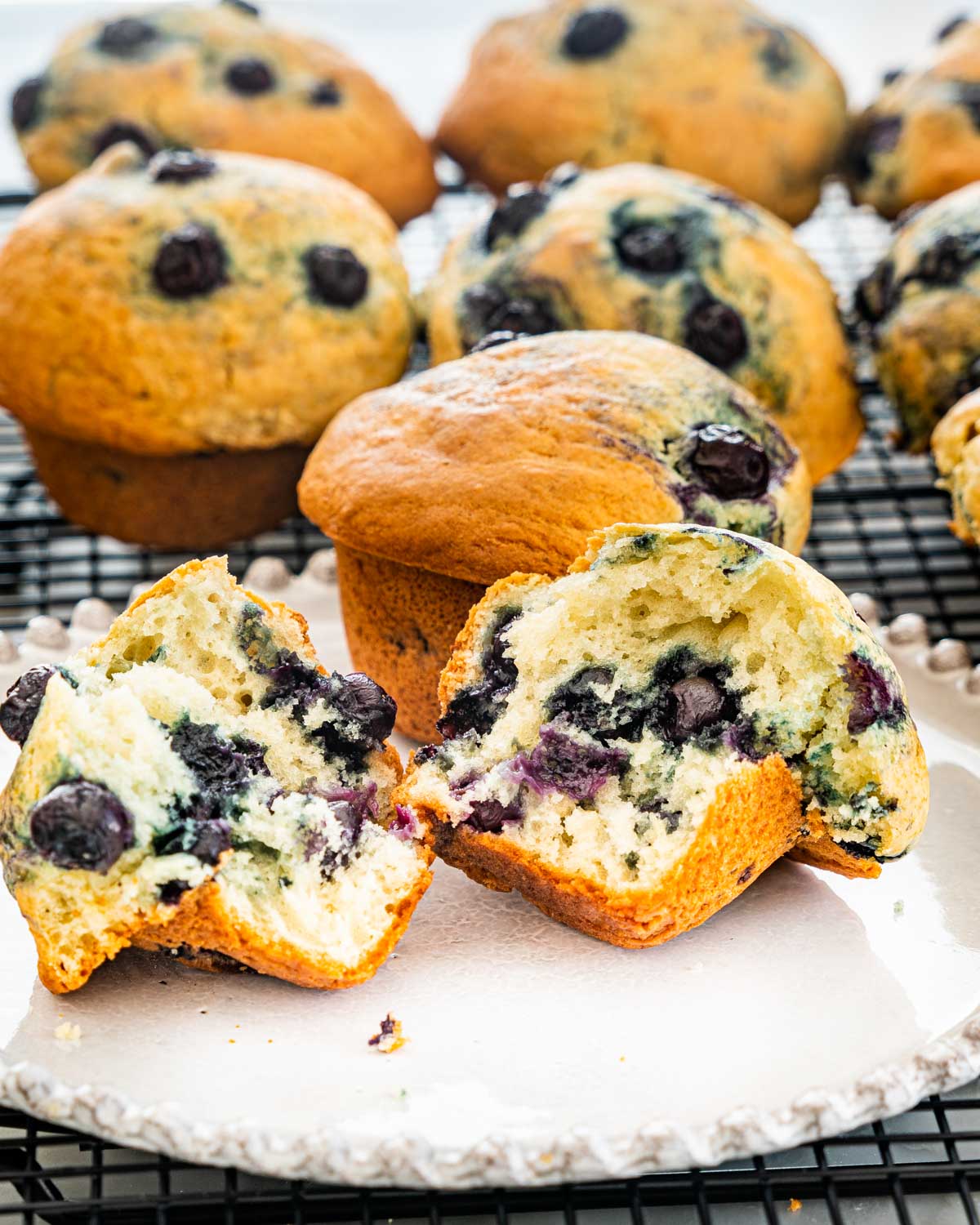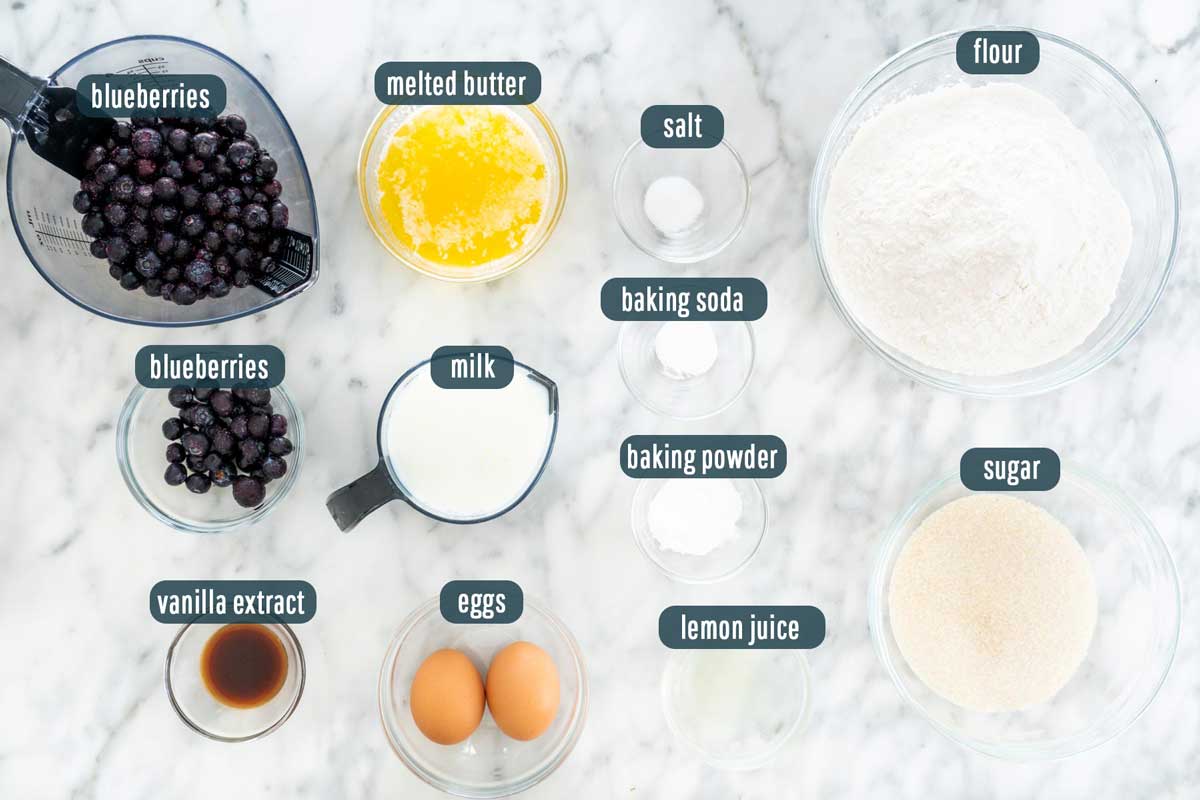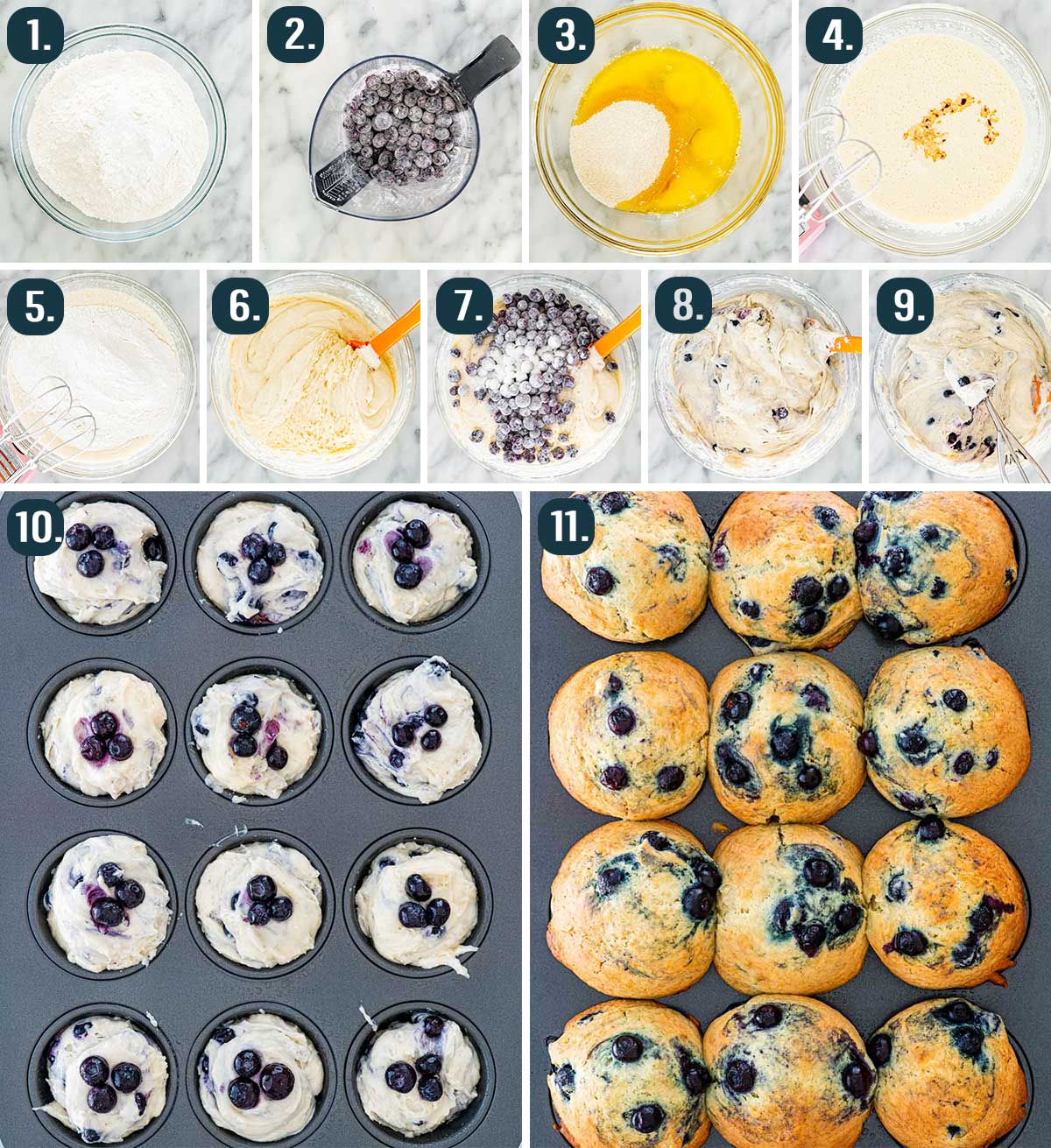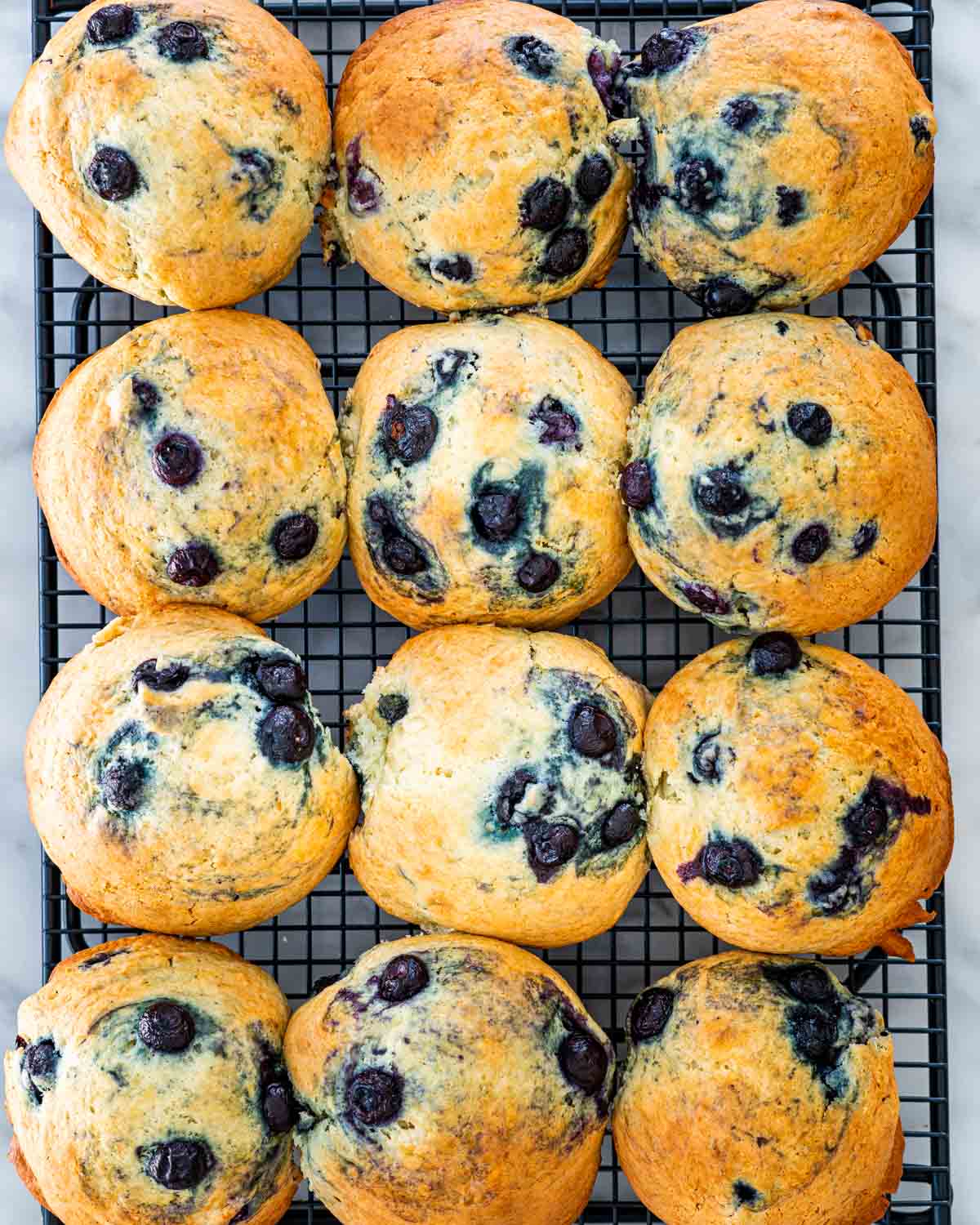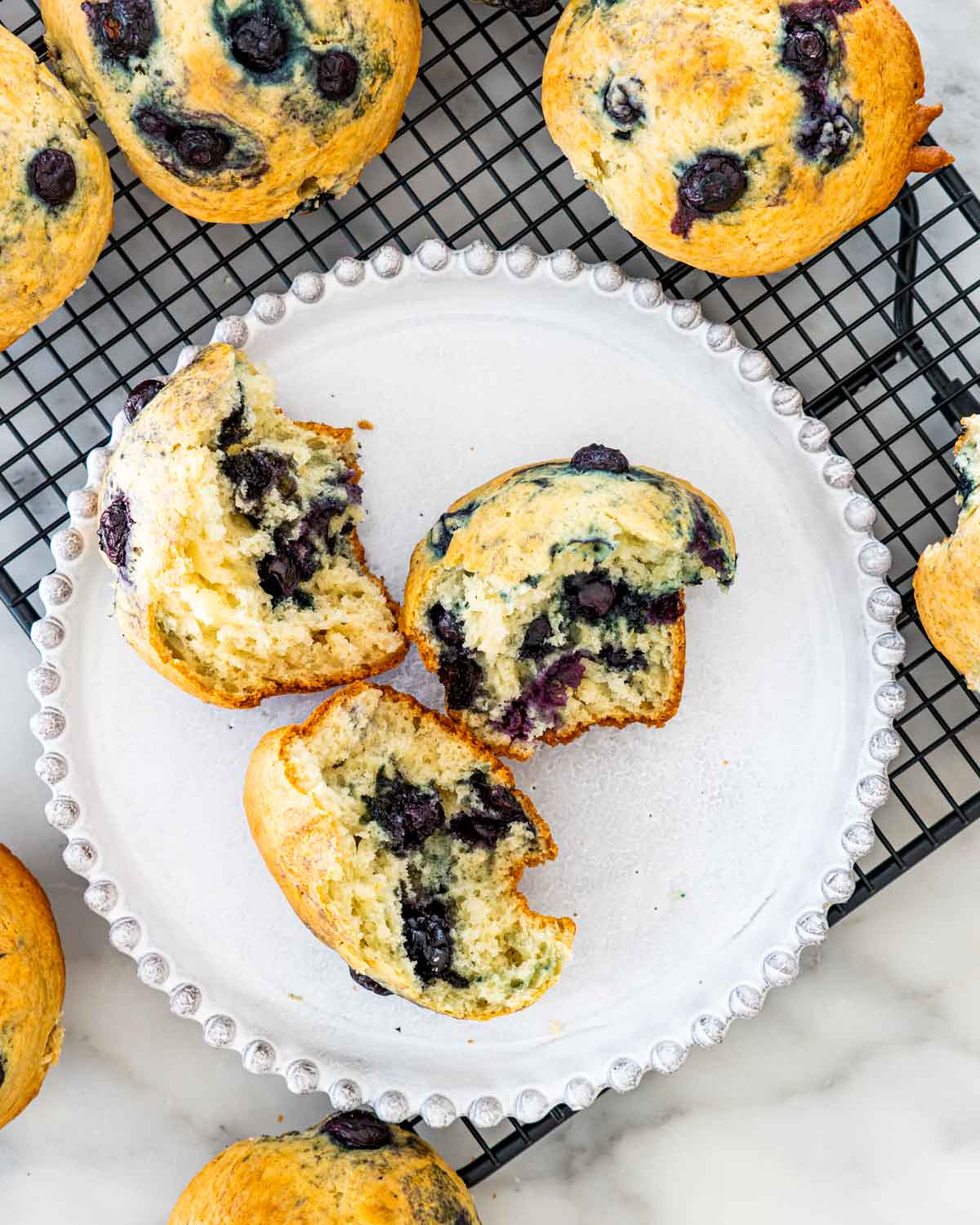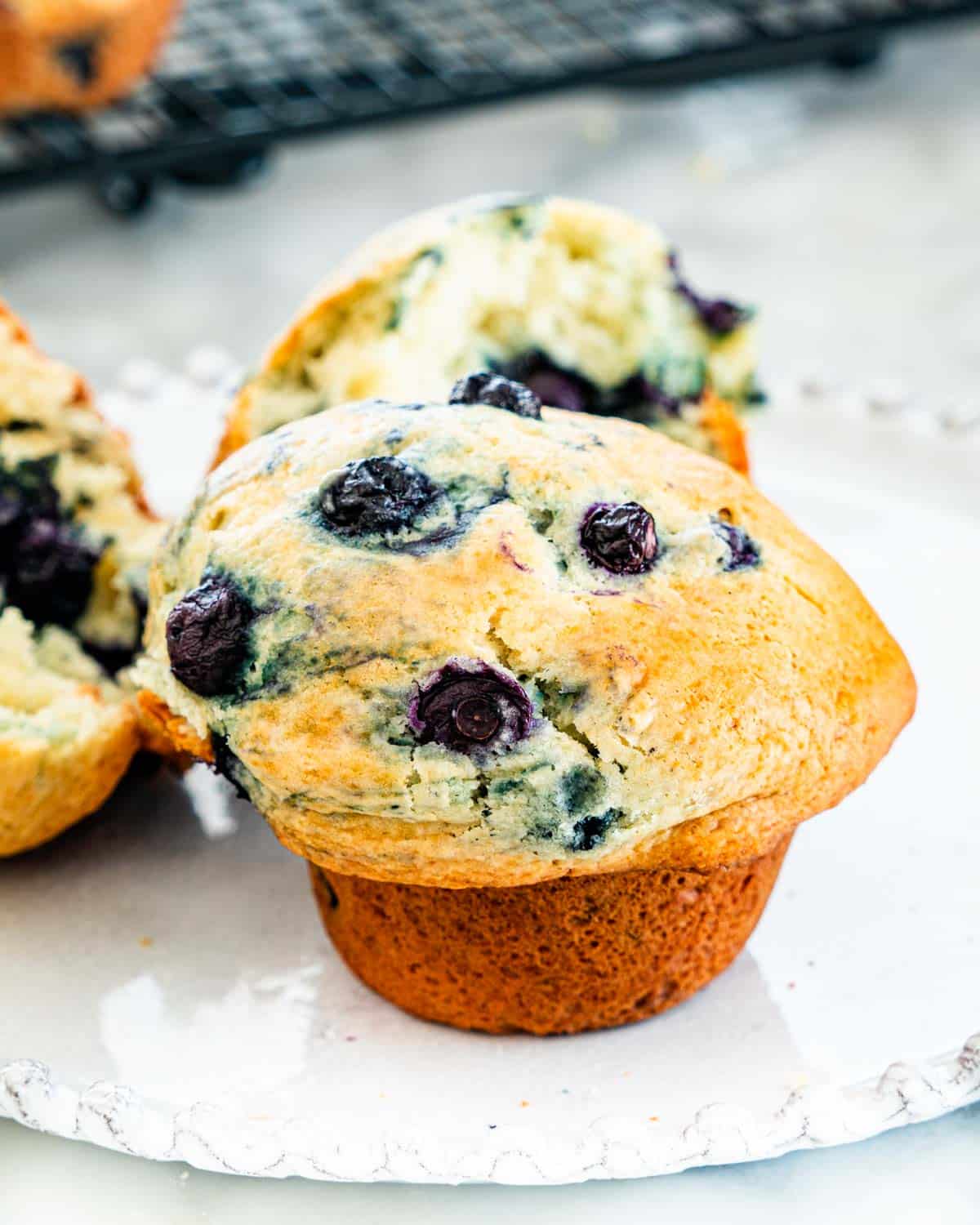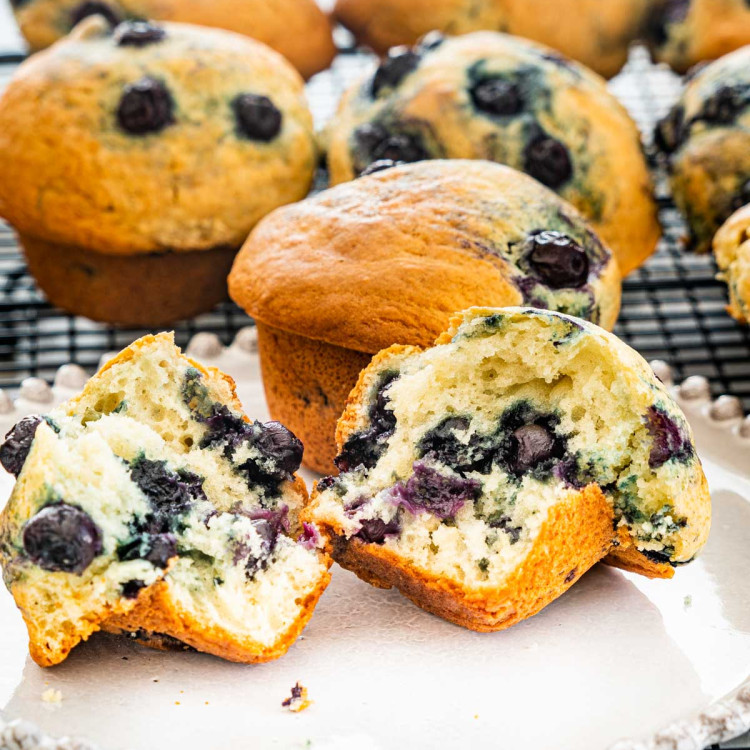My Favorite Blueberry Muffin Recipe
When I’m humming and hawing over muffin selections at my local coffee shops, I always end up gravitating to blueberry muffins. When I was in university, I used to have a blueberry muffin almost every morning for breakfast in the cafeteria. They had the most gigantic and most delicious blueberry muffins. I still love these nostalgic baked treats with a cup of coffee in the morning; there’s just nothing better. These muffins were huge, full of big blueberries and they were absolutely delicious. I’ve been trying many recipes since my college days trying to perfect the blueberry muffin based on how I remembered them. I finally got it!
Flour – Simple all-purpose flour is all you need. Leavening agents – You’ll need both baking soda and baking powder to make sure we get a nice lift and dome to our muffins. Salt – Salt is a must in all baked good, it’s what brings all the flavors together. Butter – I like to use unsalted butter to have full control over the sodium content. Eggs – Use large eggs and you’ll want them at room temperature so they whip up to a much greater volume and give us a lighter texture. Sugar – I used granulated white sugar. You can also use cane sugar. Milk – Any type of milk, including non-dairy alternatives, will work. Vanilla – I used extract but paste or fresh vanilla bean. Lemon juice – Fresh or bottled, but fresh is always best. Blueberries – I used fresh berries but you can use frozen blueberries, just make sure to dust them with some flour so they don’t sink to the bottom of the muffin. You can also substitute with raspberries or strawberries.
How Do I Know When My Muffins Are Done Baking?
Once the blueberry muffins are looking golden brown on the tops, you can start testing their doneness. Insert a toothpick into the thickest part of one of your muffins. If it comes out clean, your muffins are all done! Still some batter on the toothpick? Let them bake for another 5-10 minutes.
Can I Use Fresh Or Frozen Blueberries?
You can use either fresh blueberries or frozen. Frozen blueberries are really handy, especially when they’re not in season. Just make sure not to thaw them out, you can add them frozen right into your muffins. Even though they’re frozen, you should still toss them in with a bit of flour, this will ensure the blueberries don’t sink to the bottom.
Can I Make Gluten-Free Muffins?
Probably yes, but I’ve not tried. However, make sure to use a 1-to-1 gluten-free flour that has xanthan gum in it, which acts as a replacement for the gluten that is naturally in all-purpose flour.
Storing Blueberry Muffins
You can store your muffins in a large airtight container or sealable freezer bag. If you want to avoid the classic “plastic taste” that fluffy baked goods can take on, these muffins will store well on a cake plate with a dome. However you store the muffins, make sure they have cooled down fully to room temperature so that they don’t create condensation and sogginess in the container. Your muffins will last 2 days at room temperature or 1 week in the fridge.
Freezing Muffins
Wrap each muffin individually with plastic wrap, then transfer the muffins to a large sealable freezer bag or airtight container. They’ll last 2-3 months frozen. Let the muffins thaw at room temperature. For a speedier method, unwrap the muffin from the plastic wrap and microwave it for 10-15 seconds at a time until it has thawed.
Other Muffin Recipes To Try
Double Chocolate Muffins Pear Chocolate Chip Muffins Healthy Apple Muffins Lemon Poppy Seed Muffins Banana Nut Muffins Pancake Muffins Morning Glory Muffins

